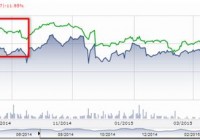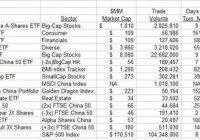The Hardest Thing To Do In Investing
Summary The investment world is chocked full of pitfalls, missed opportunities, and unforeseen risks that make the game difficult under the best of circumstances. In my world, the hardest thing that I have to do on a regular basis is buying dips in the market. The best buying opportunities are usually the ones that feel the worst. The investment world is chocked full of pitfalls, missed opportunities, and unforeseen risks that make the game difficult under the best of circumstances. Many of us worry about high fees, perfect timing, macro headline risks, and security selection with a fervor that can only be described as obsessive. At this stage of the game many investors have now converted to the ETF model and know they are getting the lowest fees possible with heavy diversification. With any luck they have also weeded out their friend’s “stock tips” after a few bad trades. Yet, the endless worries over the Fed hiking interest rates, Greece defaulting, China’s bubble collapsing, and a variety of other cataclysmic headlines make it difficult to control our emotions. The endless cycles of fear and greed are powerful motivators that try to lure us into selling low or buying high with predictable outcomes. In my world, the hardest thing that I have to do on a regular basis is buying dips in the market. It’s uncomfortable every time that I have to do it and I literally have to swallow the lump in my stomach and force myself to push the button. Why? The best buying opportunities are usually the ones that feel the worst. Let’s face it, when the market is down 3, 5, or even 10%, it’s usually because something bad is happening in the world. A country with a stock market you barely knew existed is going bankrupt, a server glitch in some backroom closet is rearing its ugly head, or an unexpected black swan event has sent shockwaves of panic across the globe. If you’re like me, your initial reaction is probably to sell everything and stock up on canned goods and ammunition. But the reality is that drastic moves of this nature will likely cause more harm than good and it’s usually not the end of the world despite the media hype. Keeping a level head and balanced perspective of the market will serve you much better than immediately trying to clear the decks. Instead of taking a sledge hammer to your portfolio, I prefer to make subtle changes to reduce the overall risk profile or deploy cash in areas of the market that look attractive during a pullback. Reduce Risk Consider transitioning away from your 3x biotech ETF to a more conservative equity holding in order to ride out the storm. As an example, I recently sold an underperforming sector position and purchased the iShares MSCI USA Minimum Volatility ETF (NYSEARCA: USMV ) for my Strategic Income clients. This move allowed me to reposition my equity exposure into an index suited for the current market environment without drastically altering the overall portfolio mix. Evaluate your bond sleeve for any signs of undo stress. Credit sensitive holdings such as high yield bonds, emerging market bonds, and convertible bonds should be put under a microscope to determine if they are indeed adding value. You may even want to consider transitioning a portion of those holdings to a more diversified bond fund with a mix of quality and credit securities. I’m still a believer in the efficacy of active management in fixed-income, which makes the PIMCO Total Return ETF (NYSEARCA: BOND ) and SPDR DoubleLine Total Return Tactical ETF (NYSEARCA: TOTL ) two of my top options. More than likely, a falling stock market will trigger a flight to quality that helps counterbalance the risk of your remaining equity holdings. When all else fails, raise a modest amount of cash to put back to work in the market once the dust clears. That may include selling some of your most volatile positions and putting the money on the sidelines for a short period of time. However, be wary of holding too much cash for too long and letting opportunities pass you by – see the next section below for details. Deploy Cash The first step in your game plan to deploy cash is to develop a watch list of positions that you want to purchase. This should include evaluating holdings based on relative strength, costs, volatility, and in the context of holes in your existing asset allocation. Take note of leadership sectors and those that are more defensive-oriented. If you are positioning for a comeback, you want to put your money to work in areas that you feel will offer the best opportunity to outperform on the upside. Identify points both below and above the current price where it would make sense to start a new position. You may not get all the way to an intended low point in the market, so it’s important to have a game plan if stocks begin to head higher as well. Discipline is important here as you don’t want to get left behind during the next rally phase. Start small and deploy capital in incremental steps. Avoid trying to call a bottom with a significant portion of your money. You may want to average into a new position with two or three trades rather than going all in at once. This will allow you greater flexibility to control your cost basis and not over commit to a certain outcome. Transaction-free ETFs make this very easy and cost-effective to accomplish. In addition, most of the major online brokerage companies have a suite of them at your disposal. The Bottom Line Despite all the innovation in the last 100 years of the stock market, controlling emotions and buying into fear is one of the hardest things to do with your hard earned capital. While it may seem counterintuitive, lightening up on your exposure on long rallies and adding on dips will serve as a solid map to achieve successful results.

